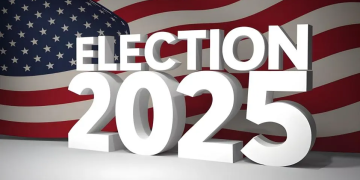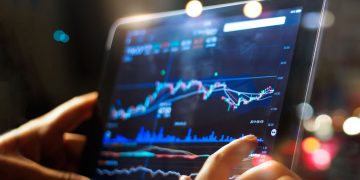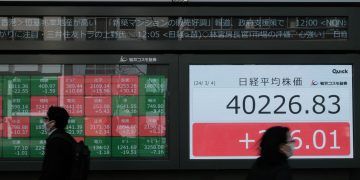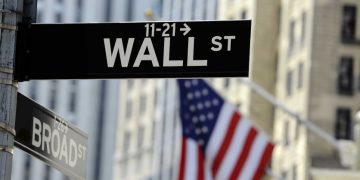Rethinking Forecasting in an Age of Uncertainty
The global financial landscape has grown increasingly volatile, influenced by everything from geopolitical tensions and deglobalization to shifting monetary regimes and climate-linked shocks. In this complexity, investors and economists alike are questioning whether traditional economic indicators are still up to the task of crisis prediction. Gross Domestic Product (GDP) growth rates, unemployment figures, yield curves, and purchasing manager indexes (PMIs)—once the mainstays of economic foresight—have repeatedly failed to provide timely warnings for financial downturns. The 2008 global financial crisis and the 2020 pandemic-induced market collapse are searing reminders of these blind spots. As uncertainty becomes the norm, attention has turned toward a new class of forecasting tools: AI-driven economic models.
These systems promise deeper insight, faster pattern recognition, and the ability to analyze massive, nonlinear datasets that are beyond human capacity. Trained on decades of market, behavioral, and macroeconomic data, artificial intelligence (AI) and machine learning (ML) algorithms are now being deployed to detect anomalies, estimate risk contagion, and signal structural imbalances that could precede financial disruptions. But are these technologies truly capable of predicting the next market crash? Or are they simply better at explaining what already happened?
The Limitations of Traditional Indicators
For decades, the economics profession has relied on a relatively narrow set of indicators to monitor financial health and predict downturns. Yield curve inversions, for example, have long been seen as one of the most reliable harbingers of recession. While historically accurate, these signals are often too blunt to account for the rapidly evolving complexities of the global economy. In 2019, the U.S. yield curve inverted—signaling a potential recession—yet no major downturn followed immediately. Instead, it was COVID-19 that triggered the next crisis, an exogenous shock outside the scope of classical economic models.
The shortcomings of traditional indicators stem from their rigidity and backward-looking nature. These models are linear, causality-driven, and often assume that economic agents behave rationally—assumptions that collapse under real-world stress. They also struggle with “unknown unknowns,” systemic feedback loops, and nonlinearities inherent in global markets. Most importantly, they do not evolve. An inverted yield curve in 1980 might carry different implications today due to structural changes in global capital flows, central bank intervention, and debt dynamics.
How AI and Machine Learning Models Work
AI-driven economic models break from these limitations by using probabilistic and data-centric methods. At their core, machine learning models ingest vast amounts of structured and unstructured data—price action, corporate earnings, sentiment analysis from news and social media, macroeconomic time series, satellite imagery, and more. These models detect patterns, correlations, and anomalies that are imperceptible to the human eye.
Some models use supervised learning, where historical data labeled as “crisis” or “non-crisis” help train algorithms to recognize early warning signs. Others use unsupervised techniques to cluster market behaviors and flag outliers. Reinforcement learning systems, meanwhile, simulate millions of possible market environments to identify strategies that minimize risk or optimize performance.
Natural language processing (NLP) is increasingly used to parse central bank statements, news headlines, analyst calls, and even social media sentiment—adding a behavioral and psychological dimension to market modeling. For example, GPT-like models trained on economic discourse can detect shifts in central bank tone or consumer confidence well before those shifts materialize in hard data.
Predictive Successes and Shortcomings in the Real World
Despite the theoretical power of AI models, real-world performance has been mixed. One notable success was during the early months of the COVID-19 pandemic. While most traditional models underestimated the severity of the economic fallout, some machine learning models—particularly those incorporating alternative data like mobility indices, shipping patterns, and hospital capacity—were able to flag a much deeper risk than official forecasts suggested.
Another case involved the 2021 Evergrande crisis in China. Several AI-powered hedge funds flagged the property developer’s credit stress months before the story gained mainstream traction. By analyzing bond spreads, regional real estate pricing data, and news sentiment, these models identified a systemic threat emerging from within China’s opaque credit markets.
However, failures abound as well. AI models did little to predict the inflationary spike of 2021–2022, largely because their training data assumed decades of low inflation and stable monetary policy. Similarly, during the Silicon Valley Bank collapse in 2023, most ML-based financial models missed the liquidity run because it unfolded too rapidly and outside the traditional retail banking framework. This points to a core issue: AI models are only as good as their data and assumptions. They can recognize patterns but may struggle with novel, high-impact, low-frequency events—exactly the kind that trigger crises.
How Investors Are Using AI Tools
Despite the challenges, investors—from retail traders to institutional funds—are increasingly integrating AI into their decision-making. Hedge funds like Renaissance Technologies and Two Sigma have long pioneered the use of AI for quantitative trading. Now, traditional asset managers, pension funds, and even family offices are deploying AI-based risk analysis tools, macro dashboards, and portfolio optimization engines.
Retail investors, too, are tapping into AI through platforms like AlphaSense, Kensho, and Bridgewater’s Datarama. These tools offer predictive insights based on alternative datasets and sophisticated modeling. AI models can analyze the volatility structure of a market, cluster stocks based on latent risk factors, and even simulate portfolio resilience under hypothetical stress scenarios.
One popular application is “nowcasting”—the real-time estimation of economic indicators using high-frequency data. For instance, instead of waiting for official unemployment figures, AI models can estimate joblessness based on Google searches for “unemployment benefits,” foot traffic to employment centers, or sentiment analysis of job postings. This allows investors to position portfolios ahead of traditional macro releases.
Another application lies in early warning systems. AI models trained to detect subtle signs of financial instability—rising counterparty risk, increased credit default swap spreads, or abnormal repo market activity—can alert investors before a full-blown crisis erupts. While no system is perfect, these models offer probabilistic assessments that can guide hedging decisions, asset reallocation, or reduced leverage.
AI’s Role in Regulatory and Systemic Risk Monitoring
It’s not just investors that are embracing AI—regulators and central banks are also exploring machine learning for economic surveillance. The European Central Bank (ECB), the U.S. Federal Reserve, and the Bank of England have all launched initiatives to incorporate AI into systemic risk monitoring. By analyzing millions of transactions, cross-border flows, and credit networks, AI systems can help regulators identify fragility before it becomes systemic.
In particular, graph-based AI models are being used to map financial contagion pathways. These models simulate how distress in one market (e.g., Chinese property bonds) could spread across geographies and asset classes, triggering chain reactions. While still experimental, these models may become crucial tools for macroprudential policy in the future.
The International Monetary Fund (IMF) has also begun using AI to improve the accuracy of its economic forecasts, incorporating unstructured data sources and dynamic modeling to move beyond static baseline scenarios. As AI gets better at parsing noise from signal, its role in shaping policy responses may grow exponentially.

The Risks of Over-Reliance on AI Models
Despite the excitement, analysts caution against over-reliance on AI as a predictive panacea. One risk is “model blindness”—the tendency to trust complex algorithms without understanding their limitations. Black-box models can produce spurious correlations or reinforce biases hidden in training data. They also tend to break down in “regime shifts,” when the market undergoes structural changes that weren’t part of the model’s original assumptions.
Another issue is the “herding effect.” As more firms adopt similar AI tools trained on overlapping datasets, the risk of market crowding and self-fulfilling signals increases. If many investors act on the same AI-generated forecast, it could distort prices or exacerbate volatility, rather than mitigate it.
There’s also a growing ethical dimension. If AI models are trained on proprietary or biased data, they may amplify inequalities or obscure systemic fragilities. Regulators will need to establish guidelines for AI transparency, model auditing, and algorithmic accountability to ensure fair market functioning.
Building Resilience Through Hybrid Thinking
The most successful investors and institutions are adopting a hybrid approach—combining AI insights with human judgment, domain expertise, and scenario analysis. Rather than seeing AI as a replacement for traditional analysis, they view it as a powerful complement. AI can flag anomalies, detect early signals, and offer probabilistic forecasts, but it’s up to humans to contextualize those findings within the broader narrative of macroeconomics and policy.
A growing field of “explainable AI” (XAI) seeks to bridge the gap between algorithm and analyst. These models aim to show not just the prediction but also the rationale behind it—highlighting the key variables and their inferred relationships. This improves trust, accountability, and the ability to adapt models as conditions change.
Looking Ahead: Can AI Predict the Next Crisis?
Can AI predict the next market crisis? The honest answer is: not perfectly, but better than traditional models alone. AI excels at identifying nonlinear risk clusters, behavioral shifts, and high-frequency anomalies. It is less effective at forecasting black swan events or adapting to entirely new paradigms without retraining. However, when used wisely, AI-driven economic models can improve situational awareness, support earlier risk identification, and offer more dynamic responses.
In a world of complexity, uncertainty, and data deluge, the ability to analyze and synthesize information quickly has become a competitive edge. AI tools won’t eliminate financial crises—but they can give investors, institutions, and policymakers a fighting chance to spot trouble before it spirals out of control.
The next crash may not look like the last one. But the institutions that are experimenting now—fine-tuning models, building cross-disciplinary teams, and integrating AI into strategic forecasting—are more likely to see the storm clouds gathering in time to act.














































